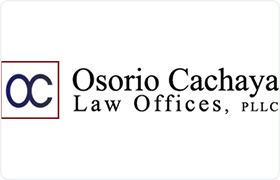Maryknoll Reorganization Lawyer, New York
Sponsored Law Firm
-
 x
x

Click For More Info:
-
Osorio Cachaya Law Offices, PLLC
203 E Post Rd 1st Floor White Plains, NY 10601» view mapAccident & Injury, Criminal, Family, Immigration Experienced Legal Assistance!
Osorio Cachaya Law Offices, PLLC is a family-owned law office that has been offering a team approach to legal issues since 1999.Se Hablamos Espanol
800-318-9750
Kenneth Michael Lewis
Litigation, Corporate, Reorganization, Commercial Bankruptcy, Bankruptcy & Debt
Status: In Good Standing
Michael H. Schwartz
Foreclosure, Reorganization, Credit & Debt, Consumer Bankruptcy
Status: In Good Standing Licensed: 42 Years
FREE CONSULTATION
CONTACT Jesus Cachaya White Plains, NY
Jesus Cachaya White Plains, NY Practice AreasExpertise
Practice AreasExpertise